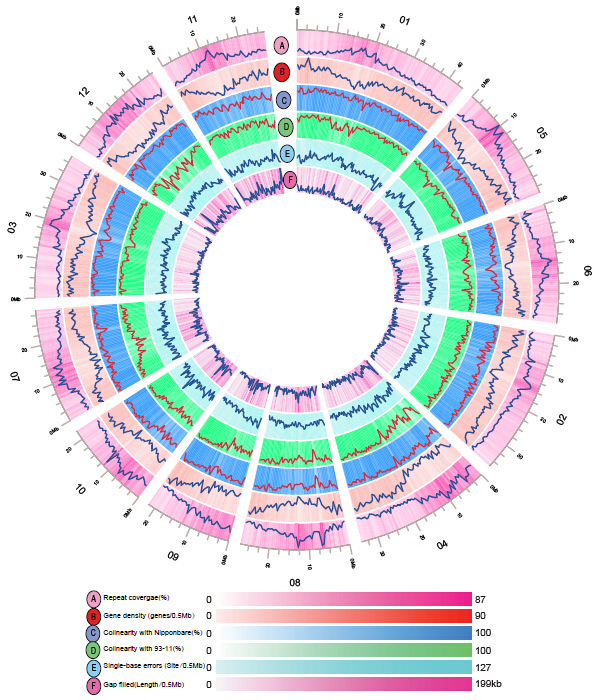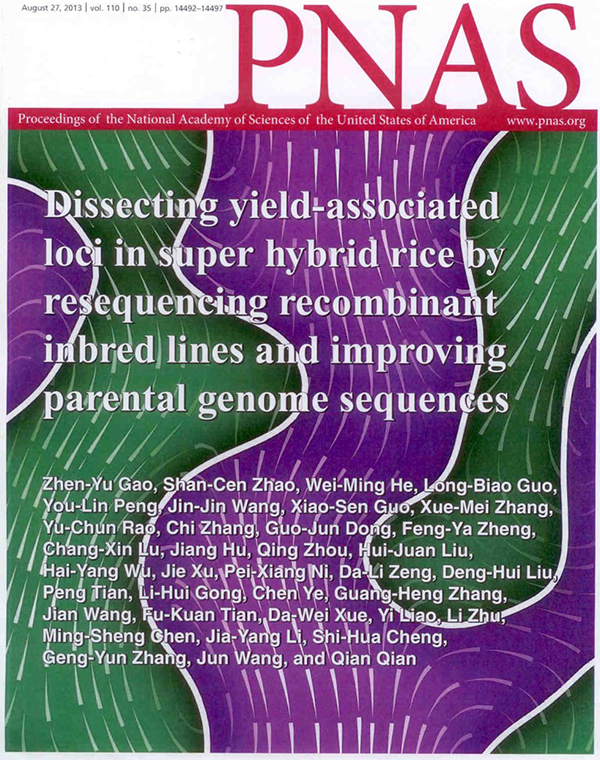






New Research Progress on Dissecting Yield-Associated Loci in Super Hybrid Rice
August 13th, 2013
With the expansion of world population and shrinkage of arable land, demand of rice yield improvement has been on the rise. Hybrid rice developed in China is contributing greatly to the world’s food production. The pioneer super hybrid rice developed by crossing 93–11 and Peiai 64s, Liang–You–Pei–Jiu has been widely grown in China and other Asia-Pacific regions for its high yield.
Scientists from China National Rice Institute, Shenzhen Key Laboratory of Transomics Biotechnologies, Institute of Genetics and Developmental Biology and other institutes jointly initiated a research, which resequenced the core recombinant inbred lines of Liang–You–Pei–Jiu and constructed a high-resolution linkage map to elucidate the genetic basis of yield and uncover its associated loci in rice. The research finding has been published on PNAS on August 27th, 2013.

The research detected 43 yield-associated quantitative trait loci, of which 20 are unique. Based on the high-density physical map, the genome sequences of paternal variety 93–11 and maternal cultivar PA64s of Liang–You–Pei–Jiu were significantly improved. The large recombinant inbred line population combined with plentiful high-quality single nucleotide polymorphisms and insertions/deletions between parental genomes allowed us to fine-map two quantitative trait loci, qSN8 and qSPB1, and to identify days to heading8 and lax panicle1 as candidate genes, respectively. The quantitative trait locus qSN8 was further confirmed to be days to heading8 by a complementation test.

The study provided an ideal platform for molecular breeding by targeting and dissecting yield associated loci, and quantitative trait loci cloning in rice.
More details are available on PNAS on the links bellow:
http://www.pnas.org/content/suppl/2013/08/09/1306579110.DCSupplemental

· Study Reveals How the Clock Component OsLUX Regulates Rice Heading
· Scientists Further Unravelled the Underlying Mechanism of Heading Date Control in Rice
· Improving the efficiency of prime editing in rice
· A New Infection Mechanism of Ustilaginoidea virens is Revealed
· Scientists Further Reveal the Infection Mechanism of Ustilaginoidea virens
CNRRI Today
Copyright © 2014- China National Rice Research Institute